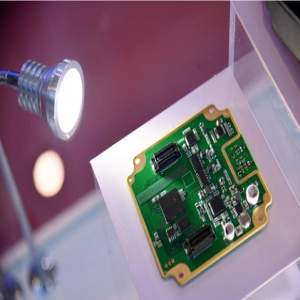
Huawei's high-precision 4D millimeter wave radar is one of its important innovations in the field of smart car sensor technology. This radar technology is developed to meet the high-precision requirements of autonomous vehicles for environmental perception in various environments. Compared with traditional 2D or 3D radar systems, 4D millimeter wave radar has significantly improved in accuracy, reliability and environmental adaptability. The following is a detailed explanation of Huawei's high-precision 4D millimeter wave radar technology:
1. Technical background and development
along with DS90CR218AMTD With the rapid development of automatic driving technology, the requirements for vehicle environment awareness system are also increasing. Although the traditional 2D radar can provide certain range and speed information, the lack of information in the vertical dimension limits its application. 3D radar has improved its perception ability by adding height information, but there is still room for improvement in accuracy and reliability. Huawei's 4D millimeter wave radar adds the speed information (fourth dimension) of the target object on the basis of 3D information (spatial coordinates), so as to achieve more comprehensive environmental awareness.
2. Operating principle of 4D millimeter wave radar
4D millimeter wave radar works mainly by transmitting and receiving millimeter wave signals. The millimeter wave signal transmitted by it will be reflected back when encountering an object. The radar determines the position, shape and relative speed of the object by receiving these reflected signals and analyzing the changes of the signal (such as Doppler frequency shift). Compared with traditional radar, 4D millimeter wave radar uses higher frequency, so it can obtain higher resolution and more accurate speed measurement.
3. Main Features and Advantages
★ High precision positioning: Through high-frequency millimeter wave signal, 4D radar can achieve centimeter level positioning accuracy.
★ Speed perception ability: In addition to spatial position, 4D radar can accurately measure the speed of objects, which is crucial for the automatic driving system to predict the behavior of surrounding vehicles and pedestrians.
★ Strong environmental adaptability: millimeter wave radar has strong penetration ability in rain, fog, snow and other severe weather conditions, ensuring the perception ability in different environments.
★ Miniaturization and high integration: Compared with laser radar (LIDAR), millimeter wave radar is easier to realize miniaturization and integration on cars.
4. Application Scenario
Huawei's high-precision 4D millimeter wave radar can be widely used in many aspects of autonomous vehicles, including but not limited to:
★ Automatic emergency braking: through high-precision speed and position perception, it can accurately judge obstacles in front and make timely braking response.
★ Automatic cruise control: it can sense the speed of the car ahead and automatically adjust the cruise speed to maintain a safe distance.
★ Lane keeping and lane changing assistance: through accurate spatial positioning, assist the vehicle to keep the lane or identify obstacles in the blind area when changing lanes.
★ Parking aid and automatic parking: accurately measure the parking space and surrounding obstacles to assist or realize automatic parking.
5. Challenges and prospects
Although Huawei's high-precision 4D millimeter wave radar has obvious advantages in technology, it still faces some challenges in practical applications, including high cost, high data processing requirements, and integration with other sensor systems. In the future, with the progress of technology and the reduction of cost, 4D millimeter wave radar is expected to play a greater role in autonomous vehicles and improve the safety and intelligent level of vehicles.
In general, the introduction of Huawei's high-precision 4D millimeter wave radar is a breakthrough in automotive sensor technology. Its high-precision, high reliability and strong environmental adaptability will greatly promote the development of automatic driving technology. With the continuous optimization of technology and the expansion of application, future autonomous vehicles will be able to provide a safer, more comfortable and more intelligent driving experience.

